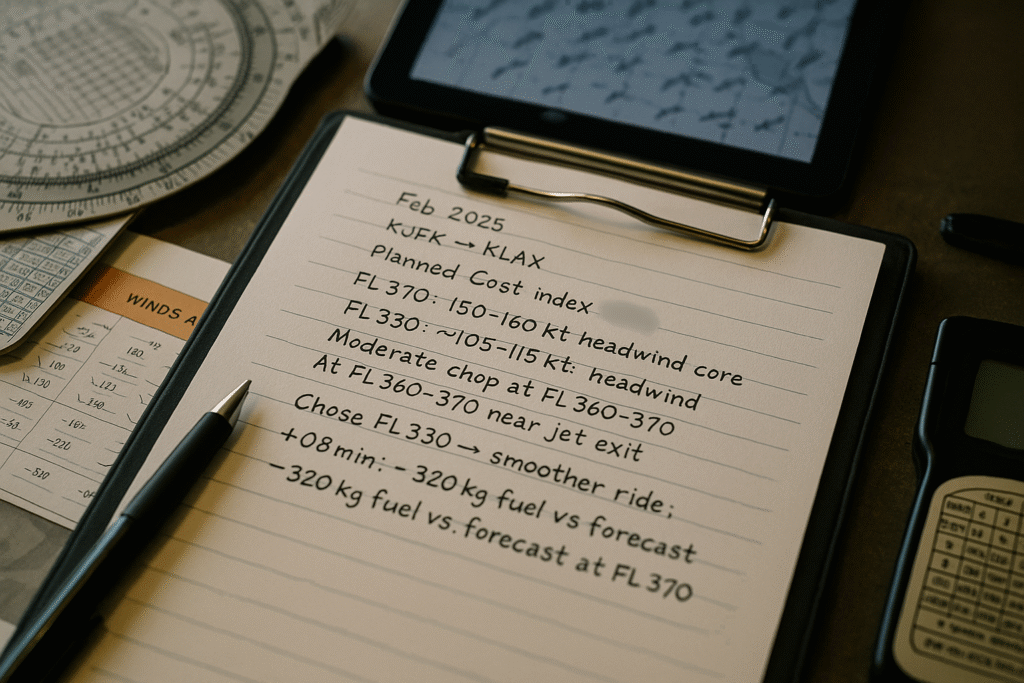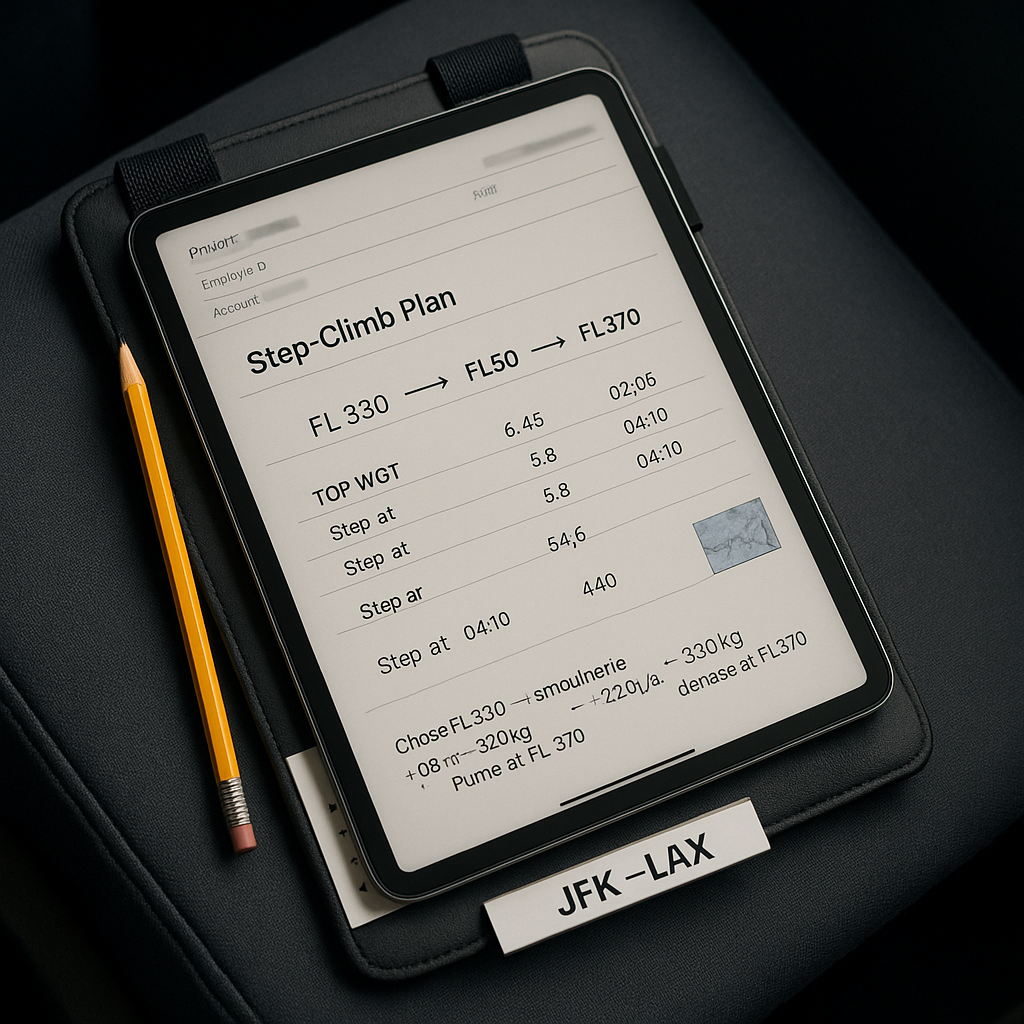When I first started sitting jumpseat as a junior analyst—and later as flight crew—the question I heard from friends was always the same: “Why 35,000 feet?” After a few thousand hours of ride reports, debriefs, and late-night calls with dispatch, I can tell you the real answer isn’t superstition or a hard-and-fast rule. It’s a balancing act—a sweet spot where physics, engineering, and operations line up to give you the best blend of speed, comfort, fuel burn, and safety margins. Most days, that lands squarely in the mid–30,000s.
I’ve watched a captain request FL340 to slip under a nasty shear layer, then step to FL360 once the weight came down and the winds softened. I’ve also seen a dispatcher pick FL350 not because it looked pretty on a chart, but because it threaded engine-out driftdown constraints over terrain and kept us in a favorable Mach for the cost index. Once you’ve lived with these trade-offs, “35,000 feet” stops being a trivia answer and turns into an operating mindset.
The Real Reason Airliners Love the Mid–30s
Let’s talk practicalities, not buzzwords. Airliners cruise where six forces balance cleanly:
- Thinner air = less drag. As you climb, air density falls. Parasite drag (skin friction + form drag) drops, so you need less thrust to maintain the same indicated airspeed—yet your true airspeed goes up. Translation: better miles per kilogram (or gallon) of fuel.
- Cold air helps the engines. Jet engines are glorified air pumps. Colder air improves compressor efficiency and overall thermodynamics, which is why the upper troposphere is a happy place for specific fuel consumption.
- Mach is king aloft. Up high, we care about Mach number, not just knots. The speed of sound decreases as temperature drops, so cruising at, say, M0.78–0.85 yields higher true and ground speeds with the same thrust setting—especially with a tailwind. If you want a tidy primer on Mach and why it matters, NASA’s explainer is excellent: NASA — Mach Number.
- Smoother air above most weather. The troposphere hoards the clouds, moisture, and bumps. The high 20s to mid–30s usually sit above the worst of it. You’ll still respect jet streams, clear-air turbulence (CAT) near shear zones, and the top anvils of serious convection—but on average, the ride improves and deviations shrink. For a plain-English take on jet streams, NOAA’s overview is solid: NOAA JetStream — The Jet Stream.
- Pressurization and structure. Your cabin isn’t at 35,000 feet; it’s regulated to feel like roughly 6,000–8,000 feet. The higher we fly, the bigger the pressure differential the fuselage must hold. Airframes are certified with structural and system limits, so the sweet spot also respects maximum operating altitude and oxygen system capabilities.
- Safety margins and routing reality. Engine-out driftdown, emergency descent profiles, ETOPS/EDTO diversion planning, and ATC flows all prefer that practical mid–30s band. It’s high enough to be efficient, low enough to keep options open when something non-normal happens.
A Short, True-to-Life Story: Choosing the “Right” Altitude Is a Moving Target
Two winters ago, we planned a westbound transcon with a cranky jet stream pointed straight at our route—160 knots on the nose at FL380, easing to 110 at FL340. Performance at takeoff weight said our initial optimum was FL330, and driftdown over the high terrain meant an escape route that worked better if we were already below the strongest shear. Dispatch filed FL340, with step climbs to FL360 and FL380 as fuel came off—if the winds cooperated.
An hour in, ride reports showed moderate chop at FL360 near the left exit region of the jet. We stayed at FL340, accepted a 10-minute arrival penalty, and saved a few hundred kilograms of fuel by not bashing into shear. Later, as weight dropped and the core shifted north, we took FL360 and got back half the time. It wasn’t glamorous, but it was the kind of quiet optimization crews and dispatchers do every day: ride quality, fuel, schedule, and safety, in that order.

Thinner Air, Lower Drag—But Not Too Thin
At sea level, dense air is great for takeoff performance, lousy for high-speed cruise. Up high, you plow through fewer molecules, so drag falls and true airspeed rises. But climb too far and you’ll hit the neighborhood where engine thrust and wing lift drop faster than you like. That’s where the “coffin corner” concept lives—at extreme altitudes, your margin between stall speed and critical Mach narrows uncomfortably. It’s safe and normal to be far from that corner in everyday ops, but it’s a good reminder of why routine passenger flights don’t push into the stratosphere. If you want a tidy, pilot-focused explainer, SKYbrary’s entry is a classic: SKYbrary — Coffin Corner.
Cold, Efficient Engines (and Why Mach Matters)
Jet engines thrive on cool, stable air. Combine that with the lower drag aloft and you get seriously good cruise economics. Up high, we fly by Mach for a reason: shock behavior and compressibility live in Mach-land, not knots-land. Keep the aircraft in its certified cruise Mach band and you’ll get predictable fuel flows and temps, with true airspeed doing the quiet work of turning the same indicated speed into a bigger bite of distance.
I’ve flown days where M0.80 at FL350 beat M0.78 at FL390 on cost once you folded in headwinds and ride. The speed tape doesn’t tell the whole story—wind and weight do.
Above Most Weather, Below Most Headaches
The high 20s and 30s get you above the bulk of moisture and bumps. You’ll still respect towering convective tops (they can punch into the high 30s), and you’ll still use radar and SIGMETs to carve a clean path. But most days, the mid–30s give you fewer thrust changes, steadier speed, and happier cabins. That steadiness matters; even a small reduction in throttle jockeying reduces noise and vibration—something passengers feel more than they realize.
For readers who like to pair weather and routing with spotting days, my go-to primer on runway configs, winds, and NOTAMs puts a practical frame around what you see on flightradar and out the window: How to Read NOTAMs, Runway Configs, and Wind for Spotting Days.
Pressurization: Great for You, Tough on Metal
A comfortable cabin altitude is one of the small miracles of modern air travel. But maintaining that pressure differential is hard work for the fuselage. Certification puts guardrails around maximum altitudes and differential pressure cycles across an airframe’s life.
Newer airframes have pushed comfort forward—tighter humidity control, lower cabin altitudes at cruise—without breaking the structural bank. Those improvements pair nicely with a cruise band in the mid–30s where the pressure delta is healthy but not punishing.
Safety Margins: Driftdown, Emergency Descent, and Real Options
When we file an altitude, we’re also filing a plan for the worst minute of the flight we hope never happens:
- Driftdown: If a twin loses an engine at cruise, can it descend to a one-engine level and still clear terrain or obstacles? Choosing FL350 with a defined escape route can make the difference between “tight” and “comfortable.”
- Rapid depressurization: From the mid–30s, crews have a clean, trained path to descend to breathable air while passenger masks bridge the gap.
- ETOPS/EDTO: On oceanic routes, altitude and winds have to support diversion times and fuel reserves you can trust.
I remember one winter night over mountains when our planned FL370 looked great on paper but didn’t buy us a clean engine-out line without an awkward dogleg. We took FL350 instead, and the driftdown profile suddenly made sense. Two minutes of humility saved us the temptation to “just make it work” at a pretty altitude.
If you want to revisit the formalities around flight levels, altimetry, and altitude references, the FAA’s Aeronautical Information Manual is still the bedrock reference for U.S. ops: FAA — Aeronautical Information Manual (AIM).
ATC, Lanes in the Sky, and Why FL350 Is “Nice”
To keep thousands of airplanes from stepping on each other, ATC uses standardized flight levels and an odd/even structure by direction of flight. The mid–30s are a crowded but orderly neighborhood: high enough to sit above most short-haul traffic, low enough to leave vertical room for long-haul heavies climbing toward the high 30s or low 40s.
This is also where winds aloft strategy lives. Eastbound? You’ll often surf the jet. Westbound? You’ll often hide from it, sometimes trading a few hundred feet of altitude to avoid the worst headwind core. On a good day, a smart westbound plan at FL330–FL350 avoids a savage FL390 headwind and arrives earlier with less fuel burned. On a bad day, you accept the pain and aim for smoother air, because ride beats schedule when safety and fatigue enter the chat.
Step Climbs: The Airplane Gets Lighter, the Altitude Gets Better
Early in a long sector, you’re heavy with fuel. Your optimum altitude is lower. As you burn, optimum rises. That’s why you’ll see step climbs in flight plans: FL330 → FL350 → FL370, each “step” nudging you back onto the efficiency curve. I’ve watched this save minutes per sector and tons of fuel over a month across a fleet. It’s quiet math, but it’s real money—and smaller emissions—when you zoom out.
If you’re into the tech side of why engines and airframes are happiest in these bands, two explainers we’ve published are worth pairing with this article: one on the evolution of jet cores and one on emerging efficiency tech. They’ll give you a better feel for why “cold + thin = good” is more than a slogan:
Why Not Just Fly Higher?
Because three limits close in as you climb:
- Thrust bleeds away with thinner air.
- Wing lift falls, so you need a faster true airspeed to fly—until high-speed (Mach) limits push back.
- Coffin corner narrows your safe speed band—plenty of normal margin at airline cruise altitudes, but you don’t tap-dance near those edges for routine passenger ops.
Bizjets flirt with the low 40s because their wings and mass make that efficient. Turboprops live lower (FL200–FL270) because props love denser air and short legs don’t justify the climb. Long-haul widebodies may touch the high 30s late in flight. Supersonic and military profiles are a different world entirely.
Comfort You Feel (Even If You Don’t Notice)
Passengers don’t think in Mach or pressure differentials; they feel ride quality, noise, and fatigue. Higher cruise levels often allow steadier thrust, fewer deviations, and less vibration. Modern cabins help too—better humidity and lower cabin altitudes pay cumulative dividends on long hauls, even when you operate in the same “mid–30s to low–40s” band.
I used to jot a simple note after each long sector: “ride / noise / fatigue.” The pattern was boring in the best way—good rides in the mid–30s, with exceptions around shear zones and mountain waves. When it was bumpy up there, it was usually bumpy everywhere.
Environmental Angle: Efficiency Is the Quiet Win
Cruising at efficient altitudes reduces fuel burn per seat-mile and therefore CO₂ and NOx per passenger compared with the same flight dragging through denser air or deviating constantly around weather. Combine smart altitude choices with tailwind routing and you can see double-digit fuel savings on long legs. It’s not just economics; it’s part of how the industry trims its footprint while we wait for cleaner fuels and propulsion to scale.
A Maintenance-Side Case: When Pressurization Calls the Shots
A line station once called in a repeat “cabin altitude caution” that popped only at FL370 on a specific tail number. The airplane was otherwise healthy. We ran a differential-pressure leak check that looked clean at FL350, but at FL370 we saw a slow creep beyond tolerance during hold. The fix turned out to be a minute outflow valve mis-rig amplified by altitude and an aging seal that still passed basic inspection. After rigging and seal replacement, the caution never came back.
The lesson? Operating altitude interacts with system margins. Pick the altitude that delivers comfort and fuel burn—and still leaves a margin for the systems to be happy and repeatable. On paper, FL370 looked “more efficient.” In practice, FL350 plus a permanent fix was the right answer.

Quick Glossary
- FL350: Flight Level 350 = 35,000 feet pressure altitude (standard setting).
- Mach: Speed as a fraction of the local speed of sound (temperature-dependent).
- Step climb: Climbing in stages as weight burns off to stay near optimum.
- Jet stream: Narrow, fast, high-altitude wind bands that can help or hurt.
- Coffin corner: Where stall speed and critical Mach creep uncomfortably close at very high altitude.
If you’re curious why we speak in flight levels and how the reference works above 18,000 feet, the FAA’s AIM is the canonical answer: FAA — Aeronautical Information Manual (AIM).
FAQs
Why say “FL350” instead of 35,000 feet?
Above 18,000 feet in the U.S., we set a standard pressure and use flight levels so everyone’s altimeters agree. It’s a safety and standardization thing, not jargon for jargon’s sake.
Is the cabin actually at 35,000 feet?
No. It’s regulated to feel like roughly 6,000–8,000 feet so you can breathe normally without supplemental oxygen.
Why does my short hop cruise at 25,000–30,000 feet?
Climbing that high just to come right back down wastes time and fuel. Short legs pick a lower, quicker slice of the profile.
Is 35,000 feet “safer” than 30,000 or 39,000?
“Safer” depends on winds, weather, weight, and terrain. The mid–30s tend to balance avoidance of most weather with good engine performance and clean emergency options.
Can airlines choose any altitude they want?
They request what’s optimal, but ATC, winds, aircraft weight, and direction of flight all factor in. Expect altitude changes during the flight to stay efficient and comfortable.







Sweet blog! I found it while surfing around on Yahoo
News. Do you have any tips on how to get listed in Yahoo News?
I’ve been trying for a while but I never seem to
get there! Thank you
[…] For a deeper dive into radar evolution in military aircraft, check out our article on Radar Evolution in Modern Fighters. […]